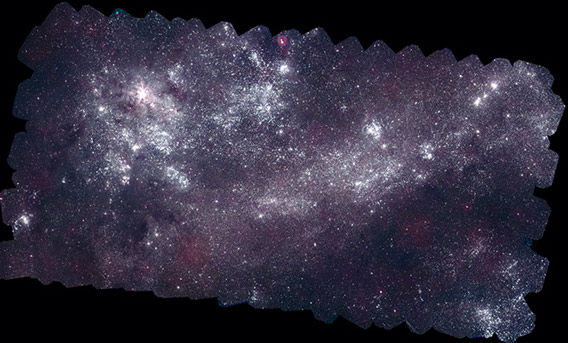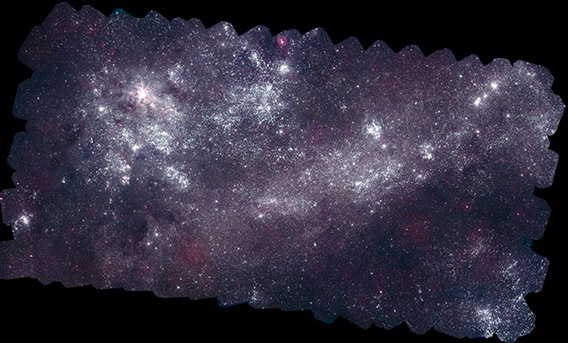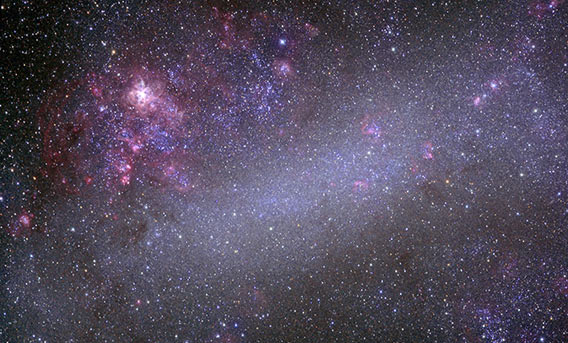“I Took Pictures of Two Galaxies!” He Said Swiftly

Photo by NASA/Swift/S. Immler (Goddard) and M. Siegel (Penn State). (Visible light image used below is by Axel Mellinger, Central Michigan University.)
NASA’s Swift satellite is one of the most successful astronomical observatories ever launched. It was designed to observe high-energy light from the sky—ultraviolet, X-rays, and über-ridiculously energetic gamma rays—that comes from the most violent explosions in the Universe: gamma-ray bursts (GRBs). These are extremely powerful explosions that mark the births of black holes.
But Swift can do much more than that. Normally it continuously scans the skies, spinning around and looking for GRBs, but it can also be pointed like any other telescope, aimed at one spot in the sky to look and see what’s there.
Recently, Swift was commanded to look at the Large and Small Magellanic Clouds, two small companion galaxies to the Milky Way. Because the two galaxies are larger than Swift’s field of view, it had to take hundreds of separate exposures that were mosaicked into huge images of our nearest galactic neighbors.


The image at the top of this post shows just the LMC in ultraviolet; the image here shows both overlayed for comparison. You can grab the bar in the middle and scroll left and right to compare Swift’s UV view ("before," on the left) to what we see in visible light ("after," on the right). The most obvious difference is that the layout of the stars: In visible light, we see stars scattered all across the galaxy, but in UV they appear to be concentrated in three distinct regions. That’s because UV comes mostly from young, massive stars that don’t live long, so they never get very far from where they were born. Older stars have time to move around and spread out, so those stars are scattered across the galaxy. The visible light we see from them is more diffuse.
The folks at NASA’s Goddard Spaceflight Center put together a nice explainer video to show what’s what:
I’m pretty impressed by this effort; it’s a Herculean task to plan this, command the spacecraft, make the observations, process and calibrate the data, and then assemble the massive mosaic. The full-resolution LMC image is a humongous 16,000 x 10,000 pixel 55 Mb file, and it’s spectacular. The big SMC image is 4,276 x 3,497 pixels, and 6 Mb.
I’m also pleased to see this because I worked on Swift for several years, writing educational and outreach materials based on its science. I also got my Ph.D. studying a star that exploded in the LMC, so for more than one reason, this image is wonderfully nostalgic for me.
Soon I’ll be traveling to Australia for an event I’m doing—I’ll have lots more info on that very soon, I promise!—and I may get my chance to see these two galaxies in our cosmic back yard with my own eyes once again. I saw them when I visited Oz a few years back, and it had a huge impact on me. It’ll be nice to pay them another neighborly visit.

